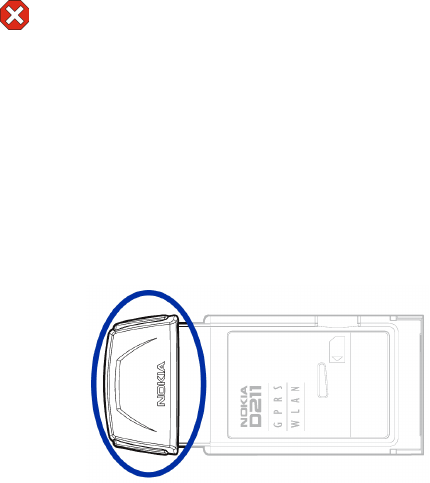
Introduction
13
© Nokia Corporation 2004. All rights reserved.
Security in WLAN
Security issues should always be carefully considered to ensure the secure
transmission of data in both wired and wireless LANs. In current wireless systems,
for example, WLAN access points need to authenticate wireless stations to
prevent unauthorised access to the network. Authentication is a service that
confirms the identity of an entity, such as a user or a computer, or confirms the
origin of a transmitted message.
The Nokia D211 supports the Wired Equivalent Privacy (WEP) protocol, which
offers basic protection in WLAN. The WEP protocol utilises the RC4 algorithm with
an up to 152-bit secret key, which encrypts data before it is transmitted over radio
waves. When the wireless stations in a WLAN wish to communicate using WEP,
they must have the same WEP key in possession.
The Nokia D211 is also compatible with leading Virtual Private Network (VPN)
clients over GPRS and WLAN. VPN is recommended for more secure network
access.
The Nokia D211 is equipped with an integrated smart card reader. SIM cards and
smart card readers provide a tool for managing secure user authentication in a
WLAN. SIM cards also provide an easy way for users to carry an authentication
device with them. On a SIM card users can store important information, such as
WEP keys and network profiles.
The smart card reader reads the data stored on the computer chip and sends it to
the network for processing. The SIM card is protected by a PIN code; to access the
contents of the SIM card, you need to enter the correct PIN code.
Caution: Keep all miniature SIM cards out of small children’s reach.
Please refer to the Data Security document found on the product CD-ROM for
more information on security issues.
Antennas
The Nokia D211 has built-in antennas inside an extension box. In this document
antenna refers to the extension box and the antennas inside it.
Figure 3 - Extension box of the Nokia D211


















